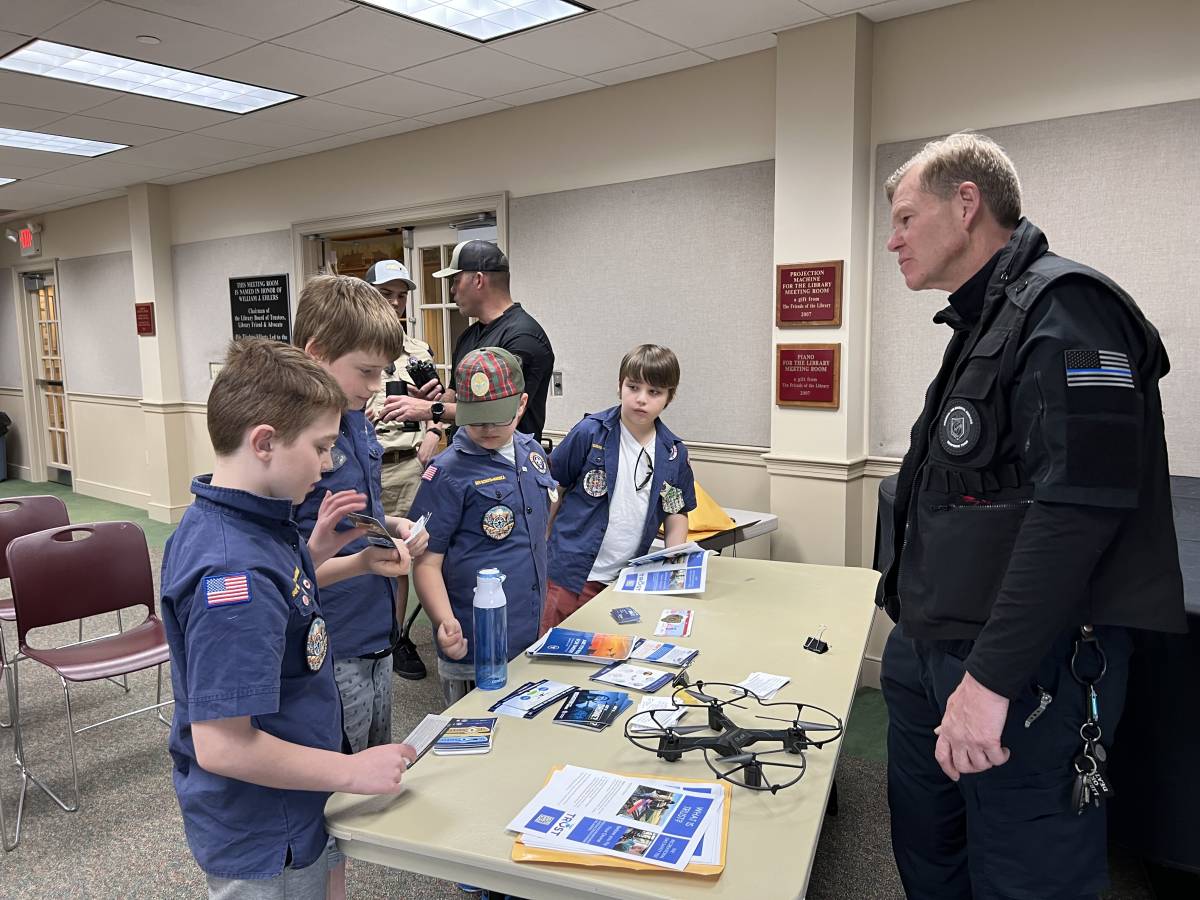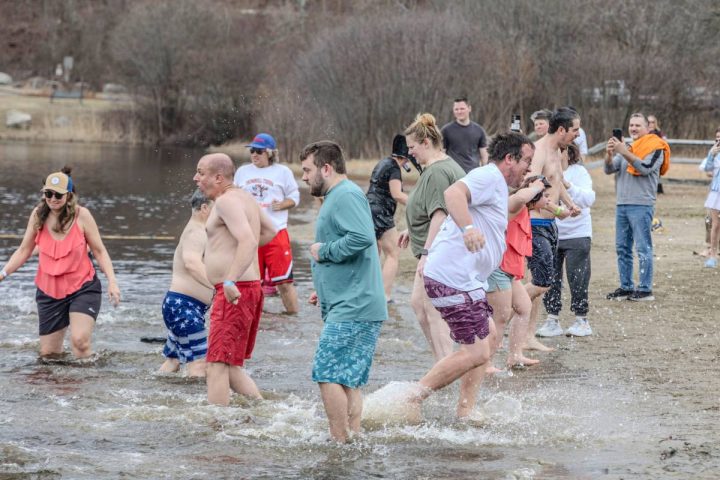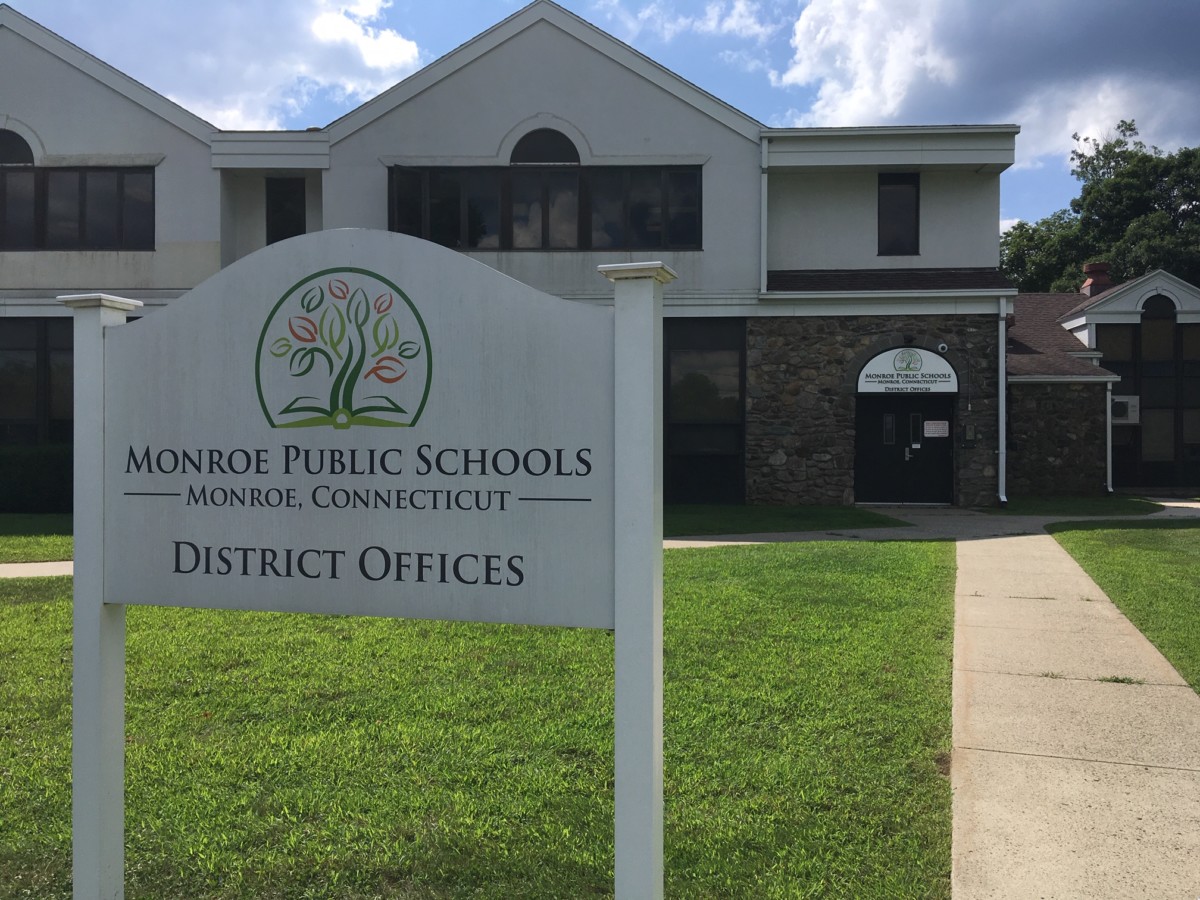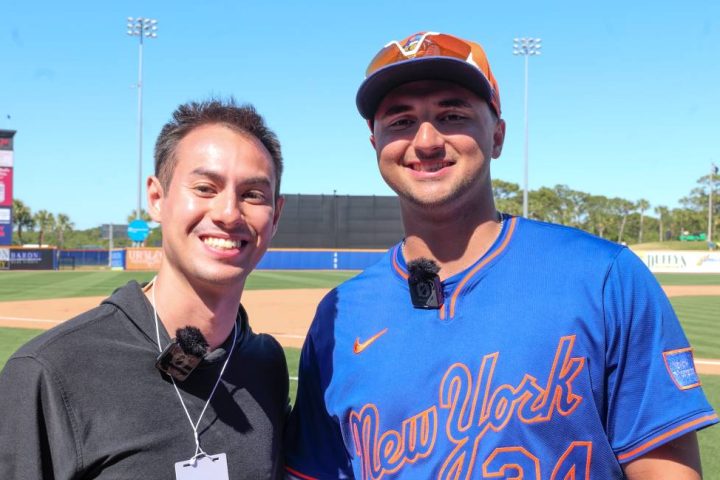MONROE, CT — Drones buzzing in the sky, often recording video and photos, are a common sight as the popularity of these small, unmanned aircraft grows. The technology is already being used by the military and, in the not-too-distant future, deliveries of Amazon packages and pizzas by drones will be possible, according to Sgt. Kevin Pelkey, of the Connecticut State Police Emergency Services Unit.
“It’s coming,” he said. “In my opinion, I think the FAA will have to have better management of air space with more sensors on the ground.”
While drones have practical uses and can be fun to play with recreationally, Pelkey, who runs the Counter Drone Unit, says regulations are in place to ensure safety in the skies and to protect the privacy of people on the ground.
On Saturday afternoon, he and Steve Blindbury, a Department of Homeland Security officer and the TSA’s Connecticut assistant federal security director for law enforcement, gave a presentation on drone safety to families of Monroe Cub Scout Pack 162 in the Ehlers Meeting Room of Edith Wheeler Memorial Library.
Some members of Boy Scout Troop 62 also attended the event.
The two men were invited by Cubmaster Jon Peck, who works for a drone manufacturer that makes the equipment law enforcement uses.
Blindbury said one of his duties is counter drone work.
“If we have drones that are committing violations of Federal Aviation Administration controlled air space, we have to go out and make sure they’re not interfering with aircraft or pieces of critical infrastructure — or with transportation,” he told his audience.
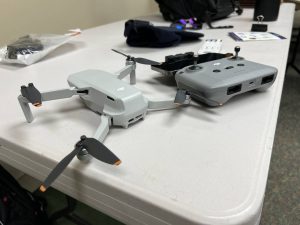
Blindbury said his unit has sensors set up across the state of Connecticut and has the ability, not only to pick up where drones are flying in the sky, but also the radio signal coming from the controller on the ground, enabling law enforcement to determine the exact location of where the pilot is standing.
Among the most common violations is flying drones too high, according to Blindbury.
“Does anybody know how high you can fly a drone?” he asked.
“Yes sir,” Blindbury said, calling on a Cub Scout.
“To space?” the boy asked, as the room filled with laughter.
“Drones cannot go up, by regulation, higher than 400 feet,” Blindbury said, “which seems pretty high, but you’d be surprised at some of these pilots who want to fly them up several thousand feet.”
Blindbury asked the children if anyone knew why law enforcement does not want people to fly drones several thousand feet above the ground.
“Because it might hit a plane?” one boy asked.

“Because it might hit a plane, exactly!” Blindbury replied. “We have planes crossing all across this state. If you ever look at a flight tracker, you can see 737s, 787s, we have these big, giant Boeings flying. When you get a drone up that high, you might hit a plane.”
As drone pilots get closer to airports, Blindbury said the FAA’s height restrictions become stricter, lowering permissible heights to 300, 200 and 100 feet, all the way down to zero. When they get to an airport, drones cannot be flown at all.
Many drones are small enough to be hand-held, but Blindbury said some are so large, the impact of a collision could actually take down an airplane.
“Congress got a little concerned about that, so in 2018 they passed the Emerging Threats Act,” he said of the law allowing the Department of Homeland Security and the Transportation Security Administration (TSA) to respond to drone incidents.
“We can find the pilots, prosecute them if we have to, take whatever action is necessary to stop them from flying, because we want to make sure they’re not interfering with commercial aviation,” Blindbury said.
But he said his agency cannot do it alone, so they rely on the assistance of local law enforcement, such as the Connecticut State Police.
Pelkey said drone pilots have to be aware of their surroundings. For example, if they are standing on a mountain, they cannot count their 400 feet from there.
Oftentimes, drone pilots are not aware of the regulations, according to Blindbury.
“We work very closely together to find these pilots who are flying their drones at a high altitude,” he said. “We find them. We reach out to them and we try to bring them in compliance with the FAA regulations.”
Protecting privacy
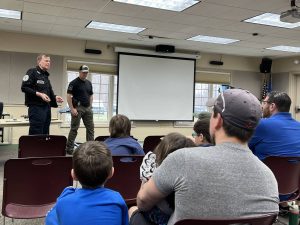
Blindbury asked the Cub Scouts if anyone knew what some other drone violations may be, and one correctly said, recording.
“They are recording and that goes into some privacy acts,” Blindbury said. “The Connecticut State Police have authority to enforce that. There are privacy restrictions. They don’t want people recording you.”
Drones cannot be flown over groups of people, public events or stadiums full of people, according to the regulations.
Of another violation, Blindbury said pilots sending their drones out miles away could lose sight of their aircraft, increasing the danger of hitting an airplane.
“The FAA has this thing they call line of sight,” Blindbury said. “You have to keep that drone in your visual line of sight if you’re flying it. You can go up to 400 feet, but you have to watch that drone. You have to see it.”
Blindbury said his unit often responds to complaints about this violation.
Gaining TRUST
Blindbury asked his young audience what people do when pursuing their driver’s license and a girl said you take a paper test.
“They give you a learner’s permit that shows you understand the DMV’s rules and regulations,” Blindbury said. “Then you can learn to drive.”
When people buy a drone for the first time, he said they can take an online course to earn a TRUST certificate, showing they know the basic rules and regulations for flying a drone.
TRUST stands for The Recreational UAS Safety Test. The law requires that all recreational flyers pass an aeronautical knowledge and safety test and provide proof of passage if asked by law enforcement or FAA personnel.
“Most of the pilots that we come across, they don’t know they have to do that,” Blindbury said, adding it is unfortunate, because if they did, many would not have violated the rules and regulations.
“We could actually enforce this,” Blindbury said of the violations. “It’s criminal activity. But, for the most part, we have people who are … silly. They don’t know better. So what we do is, we educate them. We make sure they earn a TRUST certificate. We tell them what they’re doing is wrong. We have a nice little talk with them and we bring them into compliance.”
He said there is a high success rate of first-time offenders not committing violations again.
Tracking equipment
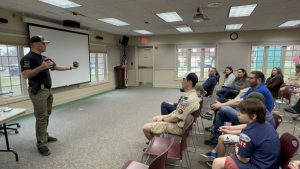
Sgt. Kevin Pelkey said he grew up without Spotify and Sirius satellite radio when he was the Cub Scouts’ age, so he had to tune into radio stations in the car to listen to music. Then he held up a portable antenna State Police use to track drones.
“That antenna is listening for radio waves, so as they’re traveling through the sky and bouncing off of everything else, they’re also pinging off an antenna on your car,” Pelkey said. “That’s all this thing right here is.”
He said his antenna can go on the roof of his truck or sometimes right on the front dashboard by the window inside his vehicle. “It works pretty well there too,” Pelkey said.
Then he held up a device that reads GPS coordinates, measuring the latitude and longitude of radio waves to locate drones and their pilots.
“This kind of listens to both of them and tells me where the drone and the owner are,” Pelkey said.
Pelkey said he and fellow officers help out at big events, including soccer and football games at Rentschler Field, where the University of Connecticut Huskies play, as well as some New England Patriots’ games and the Boston Marathon.
“We love drones. Most of the people we work with are avid flyers and pilots,” he said. “But we have to make sure everybody’s doing it safely, because that way nobody gets in trouble.”
“Does anybody know how we would get a drone out of the sky if it was creating a problem?” Pelkey asked.
One boy suggested using a controller that has stronger waves to take over the drone. “That is one way,” Pelkey said. “We’re not authorized to do that though. The military is, but we can’t.”
A Cub Scout said he would turn off his controller, which makes the drone fall to the ground. Along those same lines, another said officers could interfere with the drone owner’s radio signal.
“That would be illegal for me. I would go to jail for doing that,” Pelkey said of the latter suggestion. “They would call me a pirate or a hijacker, because the FAA looks at drones no differently than a big 737 that’s flying with 150 people in it.”
As soon as a drone is an inch off the ground outside, Pelkey said it is under the FAA’s jurisdiction.
“I’m not allowed to interfere with any of the radio frequencies,” he said. “We can’t jam them. Well, we can. We’re not allowed to, but that technology does exist. That’s what they use overseas and what the military can use if somebody’s flying too close to them. They can hit a button and basically make them drop down right out of the sky.”
It turns out local law enforcement has a much simpler solution for drone enforcement.
“The easiest way for us to get these drones out of the sky is to find the pilots and ask them,” Pelkey said. “At events, we stay on the outside, so if somebody’s flying a drone outside, we can more easily get to them.”
Pelkey and Blindbury showed the scouts videos of law enforcement and military personnel performing drone tracking exercises and had a question and answer period with the families.
For information on the rules and regulations for flying drones with links to take the TRUST certificate test, visit the FAA website.
All respectful comments with the commenter’s first and last name are welcome.

